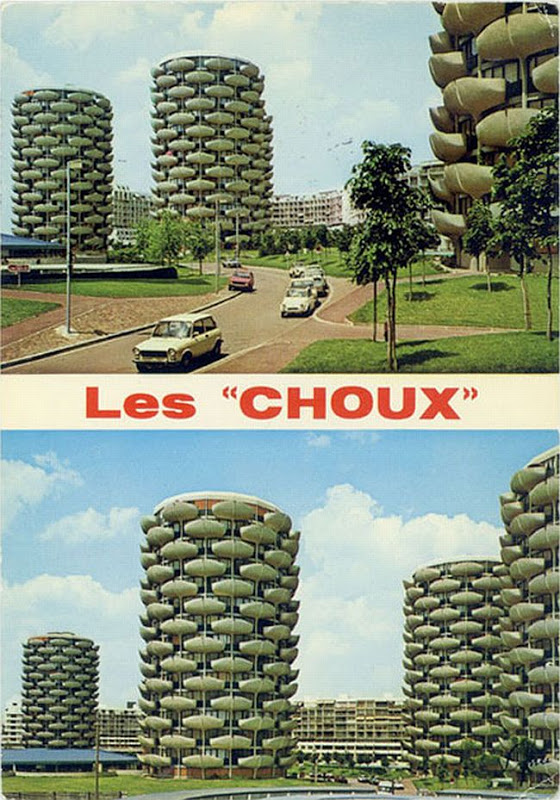Lần sau đi Paris, ngoài việc thăm Tour Eiffel (nhàm quá rồi) chúng ta nên đến thăm những "kỳ quan" kiến trúc tại Creteil, ngoại ô Paris!
<!>
If Ernest Hemingway made Paris a moveable feast, architect Gérard Grandval made its Créteil suburb the vegetable course. Built during the 1970s, the Créteil Cabbages, or “Choux de Créteil,” are French Brutalism at its finest. The ‘utopian’ residency is composed of 10 otherworldly buildings whose balconies extend like giant, concrete petals – hence the nickname, “the cabbages” or “sprouts.” We’ve also seen them described as “artichokes” and “corn on the cob.” Whichever your legume of choice, this veggie village perfectly captures the French Modernist interpretation of Utopia…



This hypnotic, vegetable utopia might look like it rolled out of a Stanley Kubrick film set, but it was in fact the dream project of French architect Gérard Grandval.

In the wake of WWII, architecture had been about building for many, and building fast, resulting in rather boxy structures. But Grandval had a grander vision, and championed an “organic design” philosophy when drafting plans for the city’s new social housing.“The flower is my anti-cube,” he said about the site, “everything looked the same back then. Créteil was my chance to do something different.”
The result? A kind of village-in-the-city that included parking, a school, a daycare, a cinema, and nearby stores for residents.
The pathways in between the buildings were all curved, as were the exposed, subterranean storage lockers at the feet of the buildings. The balconies were intended to be vegetated, and in turn, transform the concrete structures into liveable, vertical gardens.

Grandval said he actually drew inspiration from Dahlias while drafting up the plans, but that locals “thought the buildings looked like cabbages or cauliflower, so the name stuck” A natural comparison, given that the region was a large producer of the staple French veggie.

The government also gave Grandval just three weeks to draw up the structures. “There was no history in Créteil, this new commune, to pull inspiration from,” he explained, “other than its cabbage production.” The buildings made quite a stir, and not everyone was a fan of Grandval’s breed of utopia, where the living quarters were rather tight.

Just as Parisians were initially put-off by the Eiffel tower and Art Nouveau metro stops, the sprouts were ripe for ridicule. In 1976, Jacques Baratier’s satirical film, La Ville bidon, painted the cabbage patch as a blasé, pseudo-intellectual fantasy that left little room for individuality.

The towers were criticised as redundant, dizzying structures unfit for creating a diverse community. In the film, viewers follow a hip, vapid couple around the otherwise empty complex:
“Why would you leave?” says the woman with a severe bob and blue eyeshadow, “We have everything you need right here. A school, just here. All the big stores, a movie theatre…
Tammy Vu



Không có nhận xét nào:
Đăng nhận xét